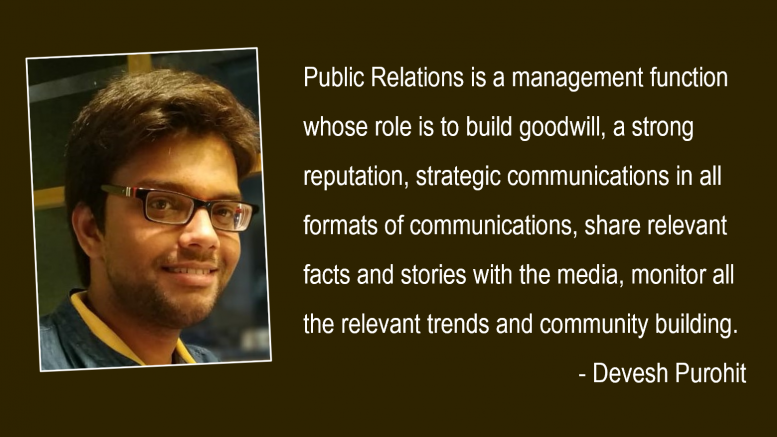Being a PR professional, I want to highlight a few key points on the idea of fame, stardom and legacy through this article. People often confuse and misuse the terms like celebrity, star, superstar, legend, fame, popularity, PR, etc.
With my social observations and primary and secondary quantitative research, I want to highlight a few basic differences and principles for Fame, Stardom and Legacy.
Difference between Fame and Stardom
Principles of Fame:
- Fame is being known in a particular geography or circle or for a duration.
- Fame is being in a trend or buzz for a particular area (at times nationally or internationally) for varying reasons at certain timeframes.
- Fame can be negative as well. Fame can be an outcome of bad reasons like fraud, cheating, crime, etc.
- Fame can be of a person, a brand, an organisation, a group, a community, a province or a country.
- Fame can bring respect or disrespect depending on the situation and reason.
- Fame is fragile.
- Fame brings the reputation at stake by being in the public eye.
- Fame brings a person/organisation on the radar list of watchdog agencies.
- Fame of a person or brand doesn’t guarantee business success in terms of sales/profit.
Principles of Stardom:
- Stardom is person-centric and not organisation or non-living thing centric.
- Stardom is when a bigger region (state, country, continent, world) knows a personality for their work/achievements in a (majorly) positive manner.
- Stardom is fragile and temporary.
- Stardom can be niche-centric, example only on Instagram or YouTube or TV or Cinema. Artists, Sports player and Politicians are usually the ones who get stardom easily compared to the people from other walks of life.
- Stardom makes a person an influencer/opinion maker and many organisations/brands/communities bank on their influential power for PR, Business and Communications. Stardom usually brings good reputation to the individual.
- Stardom brings a person on the list of watchdog agencies.
- Stardom brings a lot of scrutiny for many things, at times irrelevant and fake.
- Stardom is a responsibility.
Having a community of fans or admirers or supporters brings stardom and can make the person a star or superstar and at times in the long run a legend.
One of the major signs of stardom is when a set of people imitate the style, quote, gesture, fashion or behaviour and make it a part of pop-culture.
A person becomes a superstar when the business results (even failures or flops) of the person’s venture (movie/music/concert/startup/book/political elections/tv show) doesn’t much affects the reputation, fame, fan following, brand equity and influence of the person.
When an individual with stardom from a particular niche collaborates with another individual with stardom from another niche, it can help create synergistic image building, fan following and reputation. It can also be used for lobbying.
Stardom can also bring criticism, hatred, rumors and conspiracy theories which might damage the reputation and credibility in the public.
Stardom makes an individual a part of pop-culture and makes them a part of gossip and references in a laymen’s daily life.
Difference between Stardom and Legacy
Principles of Legacy
- Legacy can be of a person, a brand, an organisation, a culture, a community, an institution or a region.
- Legacy is the collective good work on a record for reference.
- Legacy can be passed on for centuries to come.
- Legacy can make the person/institute a target of conspiracy theories.
An individual as a PR process can become a Legend when he/she have a good set of established works, they associate with multiple institutes and collaborate with influencers and opinion makers for a good cause. When they use their influence, stardom, fame for good causes.
When many people take pride and respect in taking the name in their conversations or discussions of an individual or an organisation/institute that person/organisation/institute has attained the legacy status and title of legend.
An individual might not be a superstar but still can be a Legend.
An individual might not be famous and still can be a Legend.
Role of Public Relations in Fame, Stardom and Legacy Building
Many artists, organisations, CEOs, and political personalities across the globe hire PR Agencies for their image-building and communications strategies. Many organisations have an in-house PR team in form of a Corporate Communications department handling media relations, coordinating with third-party agencies like PR Agencies, Digital Marketing Agencies, Social Media Agencies, Event companies, Investors, developing content strategies, PR strategies and stakeholder engagement.
Public Relations is a management function whose role is to build goodwill, a strong reputation, strategic communications in all formats of communications, share relevant facts and stories with the media, monitor all the relevant trends and community building.
Public Relations as a management function can bring fame, stardom and legacy to a person or organisation over a duration of time with strategic communications processes and activities.
The views and opinions published here belong to the author and do not necessarily reflect the views and opinions of the publisher.



Be the first to comment on "Difference between Fame, Stardom and Legacy"